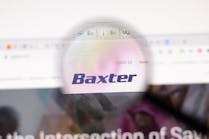hat do the following have in common? Airplane, automobile, bicycle, boat, motorcycle, train and truck. Modes of transportation represent one popular answer, if not the most obvious.
What makes each transportation mode different from the other involves the energy needed to propel it, as well as how fast it goes and how much time each takes to get to a particular destination. The reasoning behind choosing any of these transportation modes differs, too. For example, if you want to travel to the West Coast from the East Coast quickly, you’d probably choose airplane over any of the other options. If you need to pick up groceries at the local grocery store, however, you’d likely go by car or motorcycle.
In short, the transportation mode tends to fit the function.
Now what if this idea were to be applied to real-time location system (RTLS) technology? Do healthcare providers make their RTLS signal modality choice in a similar way?
The conceit here is not whether to choose RTLS as an option because that’s already established. This is all about choosing the RTLS signal modality that works for a particular healthcare organization and its desired breadth and depth of application across, locations, departments and categories, such as people (patients, staff and visitors), processes (workflow), products and equipment.
Primary RTLS signal modality options include radiofrequency identification (RFID) via WiFi or Ultra Wide Band (UWB) and high-frequency versus low-frequency variables, infrared (IR) and ultrasound (US). The signals move through active, passive or hybrid chips or sensors on wireless networks.
Healthcare Purchasing News reached out to a variety of RTLS product subject matter experts to gauge their insights on appropriate applications of RTLS signal modality options, be they a consolidated, standardized package from a single source or a “best-of-breed,” multi-modality package per function.
Plop-plop, fizz-fizz
“No one technology meets the full range of RTLS/RFID-use cases at the lowest total cost of ownership,” noted Sagi Geva, Director, Acute Care Solutions, STANLEY Healthcare. “While it might be possible to build a solution based on only one type of technology, it won’t necessarily be the best or cheapest option. To give a concrete example, RAIN RFID (passive RFID) is a great solution for shrinkage control of assets like telemetry packs. Tags are low-cost and very small so they can easily be attached to small devices, like telemetry packs, and it’s economical to install readers at key locations like laundry chutes. But if you were to use the same basic components for hospital-wide real-time location, the cost would quickly rise above other options, like active Wi-Fi tag technology.” (Editor’s Note: RAIN RFID represents the consumer name for the GS1 EPC UHF Gen2 protocol and ISO/IEC 18000-63 standard and is one of several different types of RFID in the healthcare market today, including high frequency, low frequency and active options.)
“Conversely, it doesn’t make sense to put an active tag on things that don’t move very much, like lab equipment, but which you still want to prevent from being removed from the premises,” Geva continued. “Passive technology is much better for this. This is why our approach is to use the best technology for the use case. We very frequently combine technologies — ours and others — to give customers the solution that best meets their needs.”
One danger in the purchasing decision involves equating signal modalities to soda pop flavors, such as Coke versus Pepsi on the cola side, versus root beer, ginger ale and fruit themes.
Wendy Werblin, Director, Industry Solutions, Impinj, drains the fizz from that hypothesis.
“Rather than think of the different locating and sensing (RTLS) technologies as Coke versus Pepsi, it’s more like orange juice versus scrambled eggs,” Werblin told HPN. “Both items are considered food, yet they do different things for your body — one quenches thirst while another satisfies hunger. You could use OJ for hunger, but it wouldn’t be a very good idea.
“RTLS technologies can follow this analogy,” she continued. “Each is best for a specific set of use cases. Among the technologies that are mentioned, they really fall into two broad categories: Active RFID and Passive RFID. RFID in general is a catch-all term for all radio frequency technologies, including wifi, ultrasound, ultra-high frequency and others.”
Werblin delineates between active and passive RFID this way.
- Active (battery-powered) RFID, like ultrasound and infrared, have powered tags that constantly “ping,” plus an infrastructure that leverages wi-fi to communicate data to healthcare systems like EMRs and asset management applications. Their advantage is that because the tags are constantly communicating, the location of the items those tags are attached to can be more accurate and closer to real-time than with some passive (battery-free) systems. The disadvantages include the cost of the tags — typically $30+ — the size of the tags (large), the maintenance needs of the system (changing batteries), and the use of the wi-fi network. While these technologies were some of the earlier ones used in RTLS, the cost of the tags and the maintenance has limited the use of active RFID to only the most costly mobile assets, patient workflow processes like infant security, and staff monitoring/duress. These technologies perform very well in these use cases, but can’t be used in places where wi-fi doesn’t reach and where it doesn’t make sense to use expensive and large tags.
- Passive RFID systems, like RAIN RFID, NFC and HF, have tags that behave in a “call-and-respond” manner. The tags are much less expensive — a few cents to a few dollars — than active tags, they can last forever and require zero maintenance. RAIN RFID infrastructure does not require wi-fi — Impinj technology is power over ethernet. Because RAIN tags are only “seen” when they are within the field of a reader, RAIN tends to be best used in situations involving inventory management (presence of items in a cabinet, on a shelf, or in a room) or detection of movement across a threshold or between two zones. One of the advantages of RAIN is the ability to tag many more items and types of than with other technologies, allowing the owner of the system to get more out of their investment in infrastructure. Another advantage is that a RAIN system can track assets and other items in areas where wi-fi can’t reach (for example the telemetry pack that went down a laundry chute).
“So, in my opinion, in today’s healthcare RTLS landscape a mix of technologies will provide the most benefit and [return-on-investment] for a hospital, depending, of course, on the use cases deemed most critical,” Werblin noted. “There is no one technology that today is able to meet the requirements of all mission-critical tracking applications in a hospital. Active RFID is ideal for highly accurate location of assets and people. RAIN RFID is ideal for inventory of assets and supplies, as well as zone or transition-based ‘locationing’ of assets.”
Mainstreaming the mode
What are the functional advantages and disadvantages of each signal modality in how they are applied (e.g., accuracy, costs, power efficiency, speed, etc.)?
RFID advantages
As a wireless technology that connects items to the internet easily and inexpensively, RAIN RFID systems have several advantages that healthcare organizations are leveraging today:
- Small and low-cost tags provide an ability to tag and track a wide range of items. Due to the many form factors of RAIN RFID tags, healthcare providers are able to track items ranging from supplies to large equipment and pallets to small items like telemetry packs and surgical instruments. Tags also range from disposable sticker-type tags that can be used on consumables, to durable hard tags that can be chemically cleaned or run through an autoclave.
- No batteries required means that there is zero maintenance cost associated with RAIN RFID-tagged items. Once an item is tagged, its digital identity lasts forever.
- A RAIN RFID system provides fast and long-range reading capability, able to handle over a thousand item reads per second from up to 30 feet away.
- No line-of-sight needed: Items tracked with a RAIN system do not need to be in the direct line-of-sight of a reader
- Easy to install: Impinj RAIN RFID readers and gateways use a single POE cable to connect to an organization’s network, making deployment of a RAIN system simple.
- Inventory, zone location and direction: RAIN RFID readers and gateways from Impinj are capable of reporting presence as well as the direction an item is moving and its X-Y location.
In all, these features mean that a RAIN RFID system can be used to track many more types of items than systems that use larger, more costly, battery-powered tags. The most common use cases for RAIN RFID in healthcare today are in asset tracking and inventory management.
— Wendy Werblin, Director, Industry Solutions, Impinj
This category covers two quite different types of technology: Active technology, which I’ll call RTLS for simplicity, and passive technology, which I’ll refer to as RAIN RFID.
RTLS uses battery-powered tags, which have a number of advantages: They can be programmed to transmit at certain intervals, can respond dynamically to events such as motion or tamper, and can be programmed over the air. For this reason, they are ideal for real-time applications, such as asset management, patient flow, staff safety, etc. In addition, many RTLS solutions use standard communication protocols like wi-fi, allowing hospitals to leverage their existing infrastructure for the communications backbone. Going forward, Bluetooth Low Energy is an attractive alternative because tags can have the same functionality but are smaller and cheaper. Most hospitals still don’t have ubiquitous BLE coverage yet, but wi-fi infrastructure vendors are aggressively pushing BLE into the market in their latest generation of Access Point technology.
RAIN RFID uses passive tags, which are cheaper and smaller. They can be economically placed on almost anything (however, items that need sterilization are a different matter), enabling a wider range of assets to be economically tracked. You can extend tracking to things like lab equipment or research laptops that are important but don’t necessarily need to be tracked in real time. Best of all, RAIN RFID tags don’t require battery replacement.
— Sagi Geva, Director, Acute Care Solutions, STANLEY Healthcare
Radio-frequency identification systems (RFID) are becoming essential for healthcare organizations looking to control escalating costs, decrease operational challenges and improve patient safety. Healthcare management systems place RFID sensors and tags onto critical assets such as beds, wheelchairs, infusion pumps and heart monitors, which provide real-time visibility into their location and ensure that they are ready and available for patients when most needed. According to a Zebra’s 2018 Hospital Vision Study, not having insight of where equipment is located or stored can cause operational challenges that contribute to delayed procedure start times, decreased clinician productivity, lost medical equipment, specimens and supplies.
Given the vital importance of these assets, which represent up to 40 percent-50 percent of healthcare operational costs, facilities should consider using smart tracking systems that use RFID to avoid compromising patient safety during emergencies. RFID tracking systems also improve inventory management, lower costs, and can free staff from the time consuming and arduous task of searching for equipment, enabling them to focus on caring for the patient.
— Keith Larkin, North America Sales Engineering Director, Zebra Technologies
RFID alternative advantages (infrared, ultrasound, low frequency)
IR is low-cost, and may have some suitable applications like motion detection; but we don’t consider it a good technology for real-time applications.
Ultrasound is a very good supporting technology for precise location information, such as room or bay level. Ultrasound exciters transmit a message that is picked up by RTLS tags, which then transmit the location (and other) information to the system. US is great for this application because it can be very finely tuned with minimum bleed-through into adjacent areas even within a single room and it never crosses into adjacent rooms. In addition, a single exciter device can be used to create multiple zones in one room for, say, bays in an oncology clinic (for patient flow); the exciters can be battery-powered as well, greatly simplifying installation. This makes US economical to deploy.
Low Frequency is ideal for chokepoint detection in for example security applications (like detecting when a tag is at or passing through an exit). It has very low latency, enabling immediate response to the presence of the tag at the chokepoint; in an application such as infant protection this is critical to secure the exit by activating a maglock when an infant is brought near without authorization. LF also uses very little power, so it’s very good for any application that has to be always on; for example, detecting when a staff member has used a hand hygiene dispenser.
— Sagi Geva, STANLEY Healthcare
RFID disadvantages
Using RAIN RFID to manage patient workflow is a newer application that in the past has had some challenges because the human body can shield the tag from the reader and prevent it from being read. Newer tag form factors and systems architecture can address these challenges, allowing RAIN to be used in these use cases.
— Wendy Werblin, Impinj
RTLS (active) tags are more expensive than passive tags, and battery life must be managed. They also require an infrastructure of receivers to receive messages. If this is wi-fi, there really isn’t a down side since virtually every hospital has ubiquitous wi-fi coverage; but some technologies use propriety devices, which must be installed wherever coverage is desired. When Bluetooth Low Energy matures, it will help reduce the cost of active technology.
The downside of RAIN RFID tags is that they only transmit when they pass a reader device. For many applications, this is fine, such as the example of shrinkage control above; but it is not the right solution for real-time location. You would have to put in readers in so many places that the cost advantage of the tags would be quickly eaten away.
— Sagi Geva, STANLEY Healthcare
Cost is a key element for many organizations when considering the implementation of asset tracking equipment. Over the past few years, one potential barrier to entry for healthcare facilities was the perceived high cost of RFID tags and hardware/equipment to read the tags. RFID tags have declined in cost in recent years and many healthcare providers have elected to start with a few tags on their highest value assets. The savings of any one high-value item that is lost, stolen or misplaced could more than pay for the initial RFID tracking solution.
Healthcare providers may also see concern around security when it comes to implementing any of these modalities including RFID chips and IR signals. As cyberattacks, hacking and malicious coding continue to increase, health organizations may question the vulnerability of an RTLS solution. However, RTLS systems should be looked at as an extension to or part of a hospital/clinic’s network and as long as they’re periodically assessed for system security, threats and vulnerabilities on a modality-by-modality basis, these risks can be mitigated. Each system should undergo honest risk assessment which determines the appropriate level of security to employ.
— Keith Larkin, Zebra Technologies
RFID alternative disadvantages (infrared, ultrasound, low frequency)
IR requires line-of-sight between the tag and the IR transmitter. If there is any barrier between them, the tag will not receive the IR transmission, so the location information is lost. Any glass in the environment is also problematic: You can have bleed-through to adjacent areas, reflection can interfere with signal reception and strong sunlight can block signals altogether.
There are no real downsides to ultrasound as a room-resolution technology.
LF is not as easily tuned as US, and will penetrate walls. It’s a better solution for chokepoint applications than for room-level applications.
— Sagi Geva, STANLEY Healthcare
See also: Tagging vs. bagging tracking tools

Rick Dana Barlow | Senior Editor
Rick Dana Barlow is Senior Editor for Healthcare Purchasing News, an Endeavor Business Media publication. He can be reached at [email protected].








